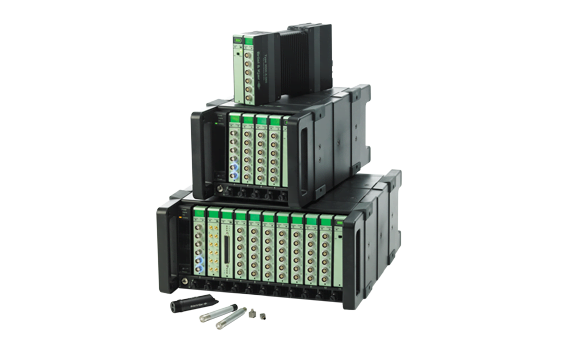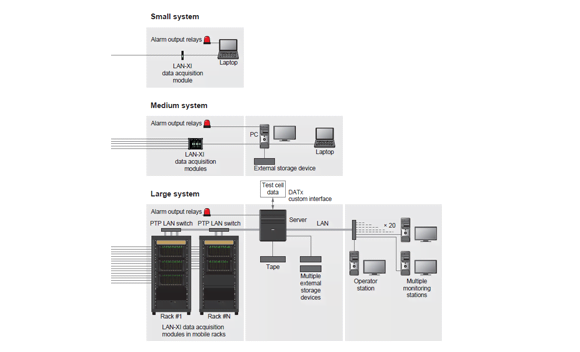Airframers face stringent requirements to reduce fuel burn, environmental emissions, and engine noise, drawing engine performance into central focus. The gas turbine is a highly complex machine that needs comprehensive testing and analysis during development, to understand and optimize their dynamic behavior. Brüel & Kjær’s gas-turbine test systems provide high-performance, scalable platforms for dynamic data recording, real-time monitoring, and post-analysis.
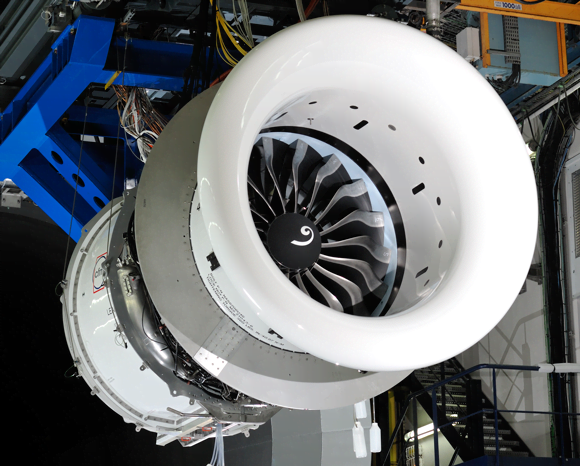
Engine testing takes considerable resources. With huge engine test stands, data acquisition capabilities, and many staff, each test is a large operation in a full schedule of them. Getting tests right the first time has many dimensions, which begin with the test setup.
Remote pre-test planning
Test planning is a complex task involving many different people defining many different sensor types and measurement aspects. A lot of upfront information needs collating and then configuring into the test system. This is a time-consuming exercise, ripe for introducing errors.
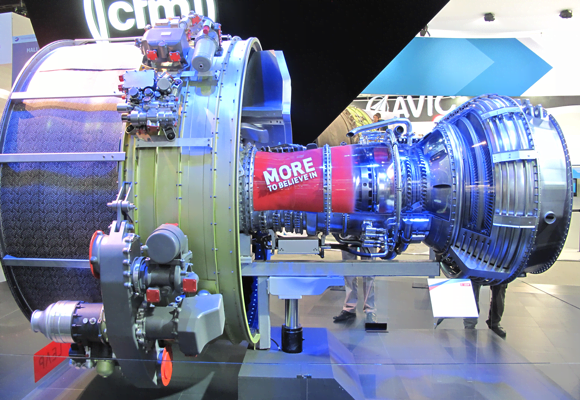
Since this data is most probably in a spreadsheet, it makes sense to use this to directly configure the data acquisition system. One Microsoft Excel file with all sensor data, types, sensitivities, positions, measurement configurations, etc., can be collated during the planning phase, outside the test cell. Once ready, it can be simply loaded into the master data acquisition PC to set up the entire system. The spreadsheet input can automatically configure measurement channels, data acquisition, data monitoring displays, and ultimately the data analysis. Then, workflow-oriented software guides the user through all setup, recording, and data handling stages.
"The operator can even listen to any channel to provide the final check that all is well before testing proper can begin."
Diverse data
As engines are put through their operating envelope, test data acquisition systems must handle many hundreds of dynamic channels of diverse data types, such as strain, vibration, pressure, and speed data. The Brüel & Kjær system is centered on the popular LAN-XI hardware unit, which has no channel binding; any channel can be connected to any input. This provides flexibility when configuring the system that saves time since there is no need to designate specific sensor types to specific data acquisition types.
The same data acquisition system input plug can accept all types of transducers (charge, IEPE, differential, tacho, bridge), again easing setup, and saving customers on capital outlay by making input modules as versatile as possible. And with the LAN-XI system, no external signal conditioning is required because all conditioning is taken care of internally, reducing complexity and capital outlay.
"The same data acquisition system input plug can accept all types of transducers (charge, IEPE, differential, tacho, bridge), again easing setup."
Versatile, scalable hardware
Since the system is scalable from a few to many hundreds of channels, some owners of Brüel & Kjær’s test-cell systems break their hardware down into smaller portable systems that can be transported around the world, in purpose-made transportable cases. In a test cell, larger systems can be semi-permanently mounted in a rack, and then easily split up into smaller systems that can each be transported between different test cells. With multiple systems with the same functionality, hardware and support costs are reduced, while easing the users’ training and learning burden.
Setting up confidently
Setting up for the test – making sure all measurement channels are functioning, that there are no cable problems, no overloads, no noise or synchronization issues, etc., is made simple with the many indigenous LAN-XI functions. Dyn-X technology removes the need for input range-setting and provides a huge effective dynamic range to eliminate overload worries. Smart channel integrity monitoring warns of any issues from anywhere along the entire signal path, from the transducer to the analyzer. An internal, automatic test provides daily performance control, by checking for each channel linearity and noise and frequency response. All this allows a quick system setup, removing the need for repetitive test runs. The operator can even listen to any channel to provide the final check that all is well before testing proper can begin.
High fidelity data
For engine tests on high-speed rotating blades, and for fluid dynamics measurements, high fidelity data is essential. Brüel & Kjær’s system provides a measurement bandwidth of up to 100 kHz, with a synchronization accuracy between channels of better than 3 degrees. In addition, 24-bit phase-synchronous data resolution provides the highest degree of measurement accuracy.
Data quality monitoring
During recording, real-time test monitoring ensures the validity of test data, to eliminate the inconvenience of re-testing. This provides instant feedback that ensures data integrity, test confidence, and test safety. However, safe data capture remains imperative. So while a data acquisition server focuses on acquiring data, users at multiple monitoring stations can monitor and analyze data from each and every channel. Both during and after data acquisition, clients of this real-time data stream have their own sets of channels and data analysis of interest and have the option of selecting relevant channels and data viewing according to their own specific requirements.
LAN-XI DAQ
The monitoring stations have direct access to the raw time-signals from selected channels, enabling them to make any type of analysis in any display format – from basic FFT & Tacho to more sophisticated 3D, Campbell, Phase, Order slice, and Tracking. Alarms can be displayed, and data can furthermore be recorded at any monitor station for backup and local playback.
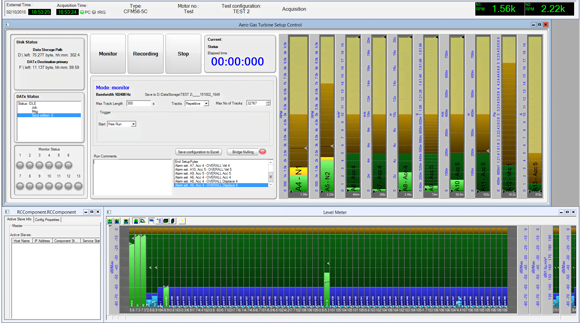
With many hundreds of channels of data recording, the data acquisition server delivers high-performance data handling with multiple layers of data security. Raid-configured hard disks, backup storage, encrypted data, system alarms, user access control, measurement alarms, and system and event logbooks are all used to maintain data integrity.
Data reuse and sharing
With high volumes of data from complicated tests, the ability to efficiently manage test data is imperative. And with a high test throughput, the importance of good test metadata cannot be over-emphasized. Data must be cataloged, efficiently moved between company databases, backed-up, converted and sent for post-analysis.
Data acquisition and analysis are often separate functions within a test organization, and data needs to be efficiently shared, both within the test facility and off-site – frequently in a universal format that can be integrated with data from other systems. The Bruel & Kjær system can convert data to other file formats like DATx, on-the-fly, and share this data across the network in parallel with the data acquisition.
"Dyn-X technology removes the need for input range-setting, and provides a huge effective dynamic range to eliminate overload worries."
The Brüel & Kjær PULSE Reflex data processing software provides an extensive toolbox of post-analysis functions. PULSE Reflex supports a wide range of file formats for import from, and export to, native and third-party systems. Processing can be fully automated or use batch-mode operation for sequenced or parallel analysis of multiple sets of data.
To support industry needs, test systems need to ensure the highest throughput of engine tests possible – all the way from the test plan to the final test report. Brüel & Kjær’s system endeavors to help gas turbine testers at every stage, boosting test efficiency, test data integrity, and test flexibility.
Snecma’s LEAP technologies
To provide performance levels that have never been achieved before, while keeping the legendary reliability of the CFM56, Snecma (Safran) has developed a revolutionary new composite material. This material is weaved in three dimensions and is used for the LEAP’s blades and the fan casing.

Abonnieren Sie unseren Newsletter zum Thema Schall und Schwingung


